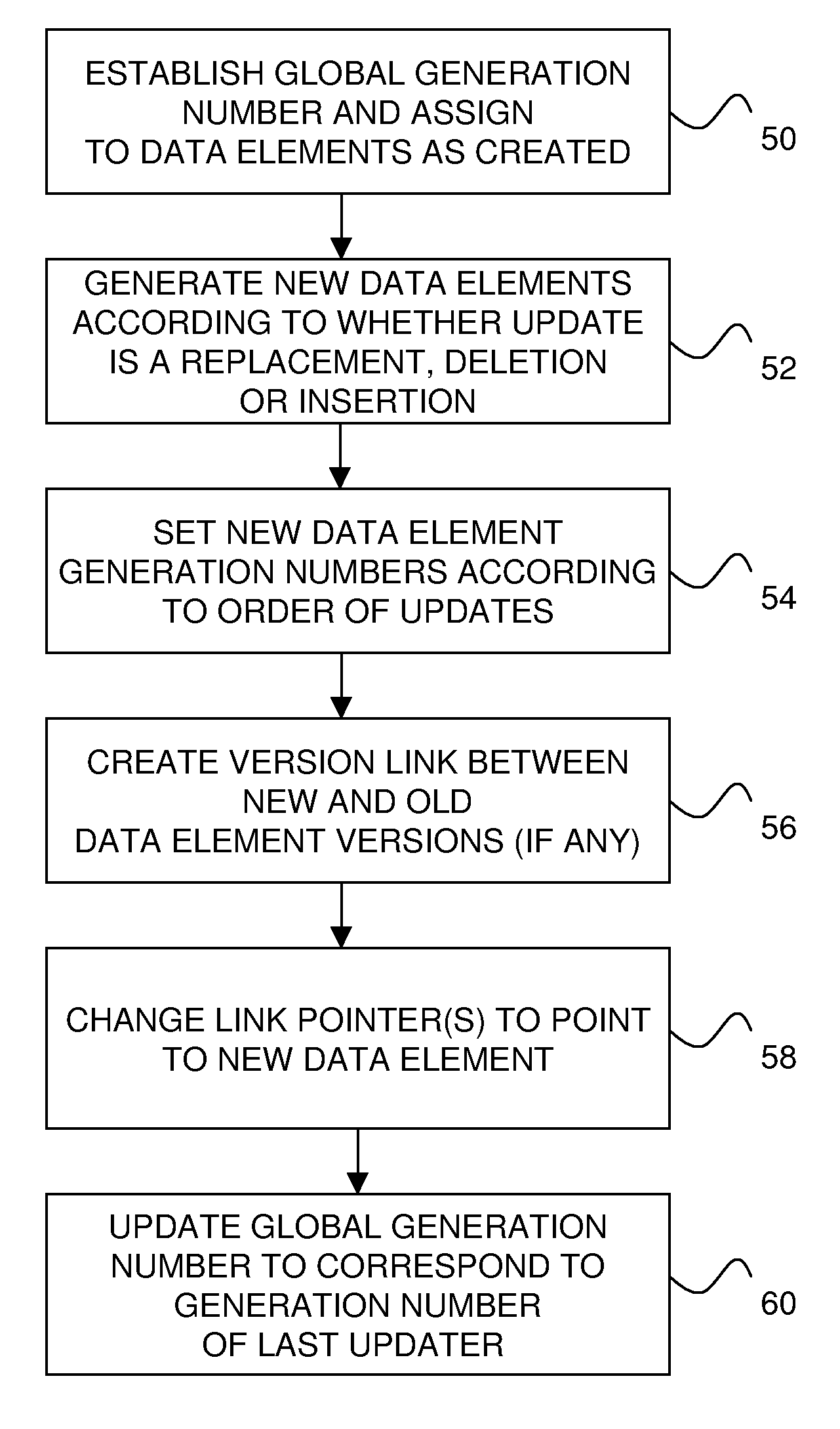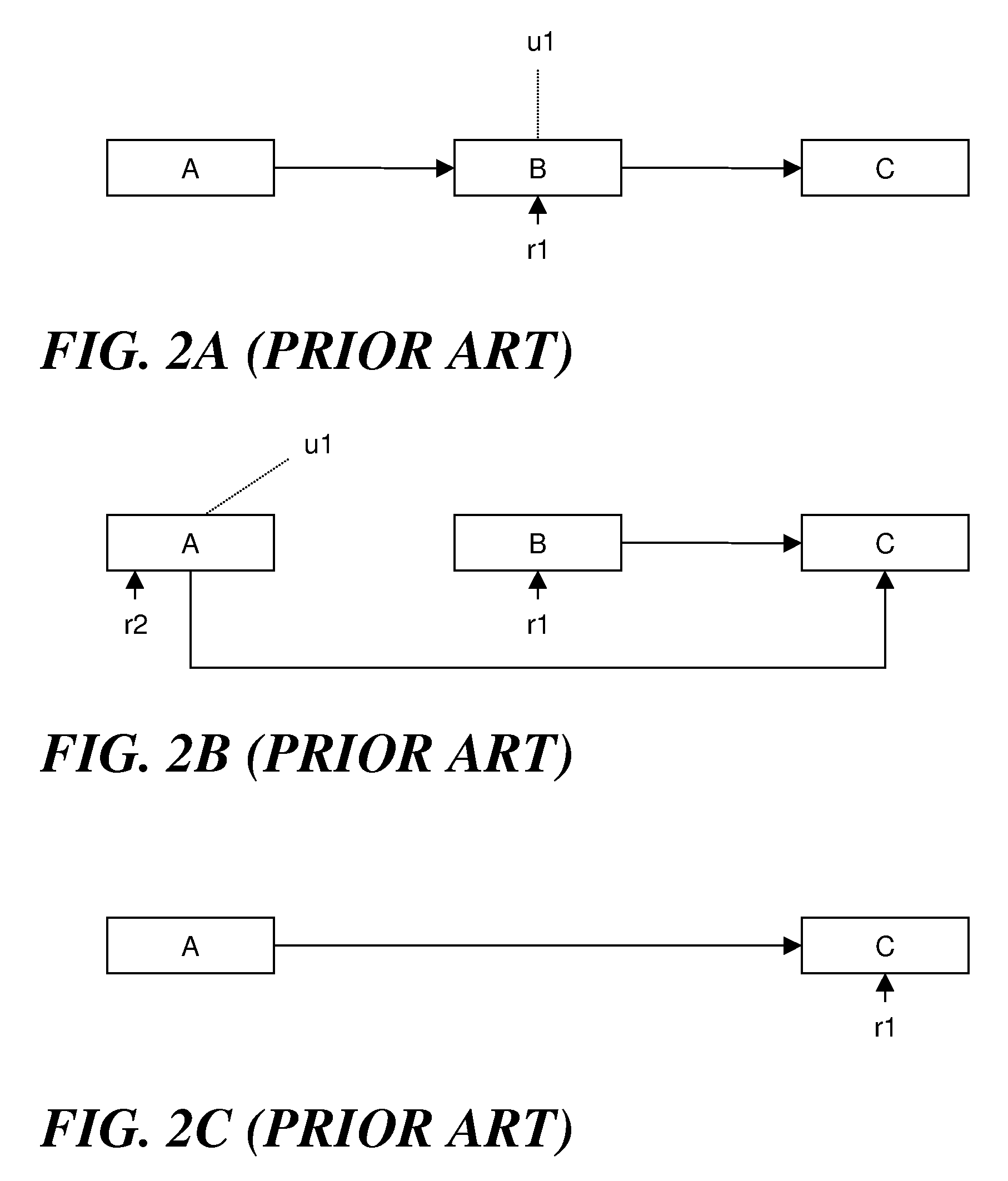Efficient support of consistent cyclic search with read-copy update and parallel updates
a technology of parallel update and cyclic search, applied in the field of efficient support of cyclic search, can solve the problems of inefficient, high cost, and high cost of read-side lock acquisition
- Summary
- Abstract
- Description
- Claims
- Application Information
AI Technical Summary
Benefits of technology
Problems solved by technology
Method used
Image
Examples
Embodiment Construction
[0045]Turning now to the figures, wherein like reference numerals represent like elements in all of the several views, FIG. 4 illustrates an example computing environment in which the present invention may be implemented. In particular, a symmetrical multiprocessor (SMP) computing system 2 is shown in which multiple processors 41, 42 . . . 4n are connected by way of a common bus 6 to a shared memory 8. Respectively associated with each processor 41, 42 . . . 4n is a conventional cache memory 101, 102 . . . 10n and a cache controller 121, 122 . . . 12n. A conventional memory controller 14 is associated with the shared memory 8. The computing system 2 is assumed to be under the management of a multitasking operating system adapted for use in an SMP environment. In the alternative, a single processor computing environment could be used, as could a hardware multithreading environment, a multi-core environment and a NUMA (Non-Uniform Memory Access) environment, to name but a few. Further...
PUM
 Login to View More
Login to View More Abstract
Description
Claims
Application Information
 Login to View More
Login to View More - R&D
- Intellectual Property
- Life Sciences
- Materials
- Tech Scout
- Unparalleled Data Quality
- Higher Quality Content
- 60% Fewer Hallucinations
Browse by: Latest US Patents, China's latest patents, Technical Efficacy Thesaurus, Application Domain, Technology Topic, Popular Technical Reports.
© 2025 PatSnap. All rights reserved.Legal|Privacy policy|Modern Slavery Act Transparency Statement|Sitemap|About US| Contact US: help@patsnap.com



